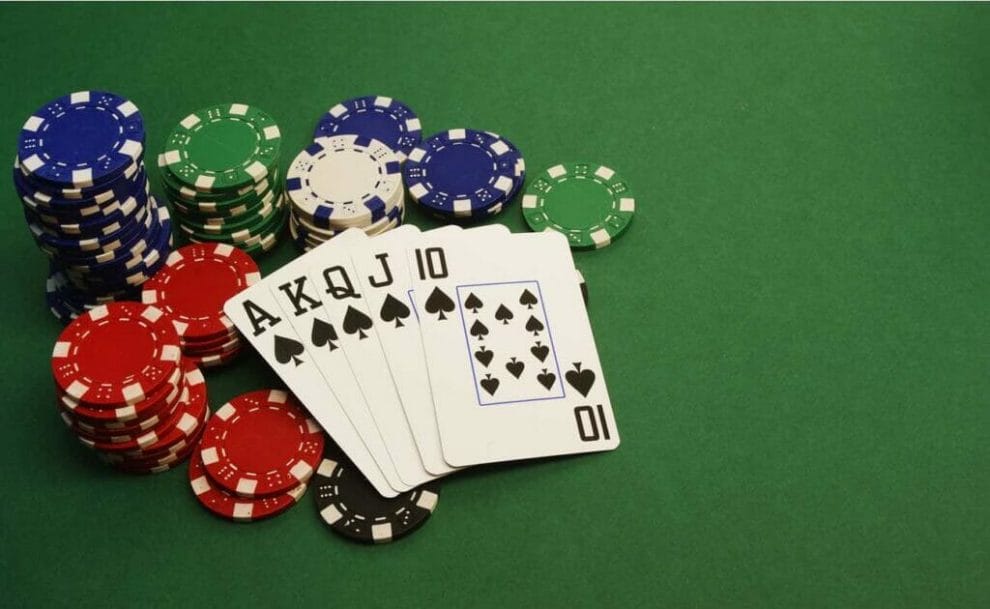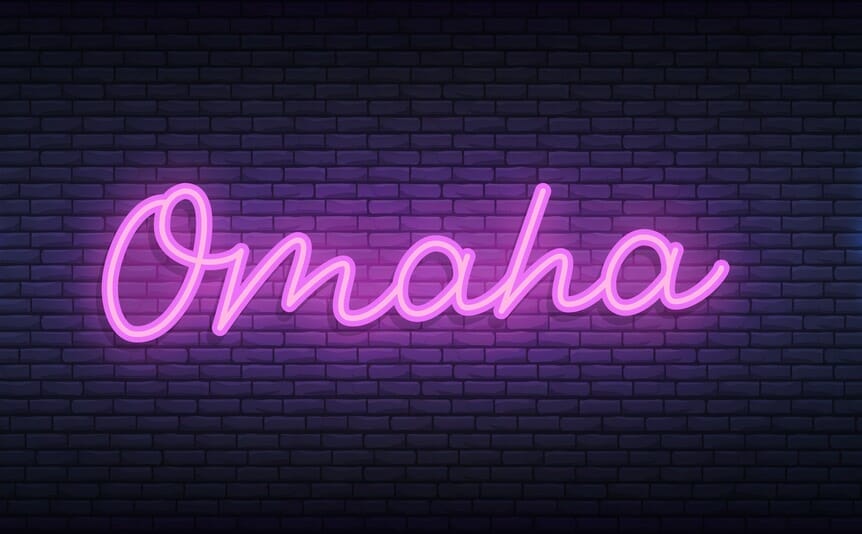
Omaha poker is quickly becoming one of the most popular online poker variants, second only to Texas hold’em poker. If you play poker online regularly, you’ll probably have played the latter version on poker game casino floors or for poker nights with your buddies. However, Omaha is also a game worth getting into. It’s easy to pick up (especially if you know how to play hold’em), and there’s tons of action on hand throughout the game. But, if you’re considering switching from hold’em to Omaha, there are a few things you should know first.
This blog post takes a look at the subtle differences between Omaha and Texas hold’em and provides a quick guide on how to play Omaha for beginners.
What Is Omaha Poker?
Before discussing how to play this popular poker variant, it’s useful to understand a bit about where it comes from and why people play it. This poker variant offers players some of the best poker action they could want, and it can be pretty challenging to boot, which is great for all of the strategic thinkers out there.
Just as with the umbrella of poker games, there are a few variants of Omaha as well, the most popular being pot-limit Omaha (PLO). Another Omaha variant that you’ll be able to find at most online casinos is Omaha hi-lo.
Part of this game’s immense success is its rules. The basic Omaha rules are the same as the basic Texas hold’em rules, so if you know how to play one, you’ll be well-equipped to play the other.
Each hand is composed of five different phases, as shown below.
The Preflop
This is the first betting round and marks the start of this game. In the preflop round, certain players, designated as the “blinds,” are obligated to place a bet, while others have the option to call, fold, or raise.
The Flop
Transitioning to the second stage, after the initial bets are made, the dealer introduces the first three community cards onto the table, face up. The players who are still in the hand will then need to decide on their next move.
The Turn
Advancing to the third betting round, an additional community card is placed on the table face up. Players who choose to stay in the game will then need to adjust their strategies based on the new card.
The River
This is the final betting round, where the last of the five community cards is dealt, also face up. The players still in the game will then make their final decisions on how to play the hand.
The Showdown
This is the final phase of the game, where the players who are still competing reveal their cards to see who has the winning hand.
Differences Between Omaha and Texas Hold’em
Most live and online poker tournaments are played in the Texas hold’em style. Consequently, it’s important to know that there are some differences between hold’em and Omaha if you’re making the switch.
Hole Cards
In hold’em, each player is given two hole cards before the flop, whereas Omaha players are each given four hole cards, which means it’s a little easier to make big hands in Omaha.
Use of Hole Cards
In Omaha poker rules, each player has to use two of their hole cards to form their final hand — no more and no fewer. By contrast, in hold’em you can use one, both, or even none of your hole cards (generally, it’s in your interests to use both).
Betting Structure
While you can use any betting structure for either game, the most popular versions are usually what you’ll find when you play poker online for money. Hold’em usually operates with a no-limit structure, while Omaha typically uses the pot-limit structure.
How To Play Omaha Poker
Now that you know the difference between the two, it’s time to learn the basics of playing Omaha poker online:
What Is the Objective of Omaha?

Each player in Omaha poker receives nine cards in the form of four hole cards (which only they can see) and five shared community cards. The aim of the game is to create the highest-ranking five-card poker hand to win the pot after all the betting rounds are complete.
The catch is that players have to use two of their four hole cards together with three of the five community cards to create their final hand. This is by far the most common mistake that new players make. They think that they have formed an excellent hand when they’ve used more or fewer than two hole cards because, then, that hand no longer counts.
The Dealer Button and the Blinds
Just like in Texas hold’em poker, there’s a dealer button in Omaha that dictates the order of play (which always goes clockwise around the table). At the end of each hand, the dealer button will move one position left onto the next player.
Two bets are always made at the start of each hand:
Small Blind
This is the “forced” bet that the player immediately to the left of the dealer must place before any cards are dealt. It’s usually a small, nominal bet whose value is equal to the lowest of table stakes.
Big Blind
This is placed by the player to the left of the small blind, two seats left of the dealer. The big blind is also placed before any cards are dealt and is usually double the small blind. So, for example, in a “$1/$2 cash game,” the small blind would be $1, and the big would be $2.
The First Betting Round
Once the dealer button has been placed and the two blind bets are down, each player is dealt their four face-down hole cards. Then, the first betting round starts with the player to the left of the big blind.
At this point, each player can choose one of the following options when their turn comes:
Bet
Players can choose to place their first chips into a round of betting. The big blind will be the first bet, and bets in the first round must be equal to or greater than the big blind.
Call
Match the last bet placed in the betting round.
Raise
Make an increase on the previous betting amount. Other players need to call on this amount to remain in the hand.
Fold
To forfeit, drop out of the round and lose any chips in the pot.
All-In
All-ins are more common for no-limit games, and a player can push all of their chips into the center of the table, separate from the pot pile. A player can do this in a pot-limit game only if they don’t have enough chips to call, bet, or raise in a hand.
Final Notes of Play
Once betting reaches the small blind or big blind players, they can call and then add the difference between their blind bet and the current bet to the pot. If there has been no raise during the round, then the big blind can either call or bet.
Remember that you can also make a decision to “check” in all betting rounds other than this first one. Checking means you don’t wish to make a bet and that you are passing the action to the next player. It can’t happen in the first round because the blind bets force everyone to equal, at least the big blind or fold.
The Second Round of Betting

Once the first round of betting is complete, the second round starts. Three cards — known collectively as the flop — are dealt face-up into the middle of the table. These “community cards” can be used by all players to form their best hand when it comes to the showdown.
The first player to the left of the dealer, who’s still in the hand then starts the second round of betting. By now, they’ll have some idea of how they’ll use the community cards to improve their hand, but there are two more to come, so there’s still a lot that can change during the game. Betting continues around the table as before until all players who want to continue with the hand have placed an equal value of chips into the pot. Players who don’t want to continue must fold and drop out of the round.
The Third Round of Betting
This round of betting takes place after the fourth community card (known as “the turn” or “fourth street”) is dealt face-up in the center of the table. The third betting round will follow the same format as the second round.
The Fourth Betting Round
The final round of betting sees the fifth and final community card placed on the table, which is known as the “river” or “fifth street.” This last round of betting offers players their final chance to nudge up the total value of the pot. If all players except one fold, then they’ll win the pot. If someone calls and raises their bet and two players remain in the game, it will go to the “showdown.”
The Showdown

The showdown only occurs if two or more players remain in the hand. If only one player remains during any of the above rounds, they will win the pot outright and not need to show their cards.
During the showdown, each player still in the hand has to reveal their highest-ranking five-card poker hand using exactly two (of their four) hole cards and three community cards. The player with the best poker hand scoops the pot, or in the unusual scenario of a tie, it’s shared equally between the players still in the game.
Hand rankings are the same as those used in Texas hold’em.
Play Omaha Poker With Borgata Online
Borgata Online has a wide range of poker variants (not just Omaha and Texas hold’em) for you to enjoy, with formats including table games, live dealer games, video poker online, and more. Whether you want to relax and play independently or take part in exciting weekly poker tournaments, you’ll find exactly what you need. You can also play a wide variety of online casino games, from online slots to roulette and blackjack.
Register with Borgata Online to put your poker strategy to the test and play your favorite types of poker.
